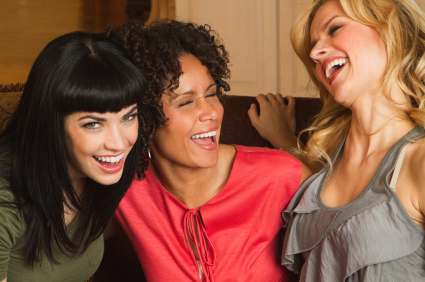Redefining ‘cool’: Cold Front’s pushing new boundaries
Cold Front ® is not simply for hot flashes any longer. In fact, entrepreneur and Founder of Personally Cool — Susie Hadas — is expanding her horizons and needs your help!
Although hot flashes may be the only game in FlashFree Town, there appears to be a need for cooling outside the menopausal boundaries. And let’s face it; as much as me and several other esteemed menopause bloggers have tried to move the needle, talking menopause is not always easy. And engaging women who want to admit that they’re not simply sweating but flashing can be an upward battle. Consequently, Susie and her team have gone back to the drawing board and emerged with a brand new bag: personally cooling is truly a global endeavour. Voila! A new Indiegogo Campaign has been born! And your assistance is needed!
I can assure you that Susie is not turning her back on menopause but looking forward to help millions of individuals worldwide who suffer from:
- heat intolerance due to multiple sclerosis and thyroid issues
- hormonal changes in men that also cause hot flashes
- chemotherapy side effects
When I caught Susie on the Twitter stream announcing the campaign, I sent her a note asking for more details. She says that when she and her team were on the road, “more people were talking to us – travelers, moms, fashionistas, runners, bikers, hikers, the list goes on. They were all asking us the same question, “Why aren’t you talking to me?” So, she took a step back and decided to relaunch Cold Front on a new level.
Susie notes that in order to grow, they need funding. Moreover, the money they raise to produce another run will enable the company to produce wraps for the gel packs and a single larger gel pack which is what customers have asked for.
And yet, there is another element to this that I want to share with you:
Giving back.
Like many entrepreneurs, Susie has not rested on her laurels or profits and rather, has consistently and continually given back. An attractive aspect of the Indiegogo campaign is that the money that you donate can actually go towards funding three charities whose constituents will benefit from cold therapy:
- Love to Langa, a Cape Townships, South Africa organization that is working to build and renovate Early Childhood Education Centers. Your gift of coldfront® will cool the children down and always be on hand as a non-toxic first-aid solution for minor bumps and bruises.
- Nayaya Health, a Nepal-based organization that provides care to residents of the Achham region of Nepal for free, and employs over 160 Nepalese citizens. (Nyaya Health has been using coldfront® to keep staff and patients cool and aid in pain relief and they have requested more units).
- CT Challenge’s Center for Survivorship, a Connecticut-based survivorship center offering evidence-based programs designed to help empower cancer survivors to live healthier lives.
Susie’s campaign goal is $100,000 and she’s got 35 days left to achieve it.
How about we chip in as a team and cool the world?
Read MoreWednesday Bubble: Want to lose weight? Set better goals!
I can only imagine that you are rolling your eyes at the headline. But according to newly published research, how you set your weight loss goals may ultimately determine how successful or not you are at realizing them.
Let me break it down for you:
Menopause is challenging enough when it comes to weight gain and belly fat and the rest. However, are we setting ourselves up for failure when we tell ourselves that we want to lose “3 lbs?” Researchers from Florida State University and Washington University say a resounding “yes!”
They say that there is a distinction between making high-low range goals (I want to lose 2 to 4 pounds) and single number goals (I want to lose three pounds this week). This distinction makes an enormous difference, at least in terms of reengaging, i.e. doing something once and then doing it again — either by setting the same goal or setting. The high-low option actually offers an out, so to speak or as the researchers state “best of both worlds.” In other words, it’s a win-win whether or not you lose one pound or three pounds; both fall into the range that you set at the start. Conversely, a single number sets us up for ‘all or nothing’ or as I like to say, all or nothing in between. After all, isn’t is amazing when you set up to lose a pound and end up with a two pound bonus?!
To test out their hypothesis, the researchers 45 adult women around 45 years of age to establish a single number weight loss goal or high-low weight loss goal for a week over three weeks. During this time period, they attended one hour group sessions and learned about healthy lifestyle practices and weight loss was measured weekly. After three weeks, they had the option of reengaging for another 10 weeks. To avoid generalization of findings, the study was also repeated but this time, the goal had to do with overeating a regular sized bag of M&Ms and focused on achieving a target number.
So, how did the participants do?
In the weight loss study, more patients setting high-low goals reenrolled in the second portion than those setting single number goals. In the second study, the high-low goal left the participants with greater levels of accomplishment and a significantly greater interest in reengaging in goal setting again.
The key? Attainable and challenging.
Look, these numbers are small and not definitive. But it should make you stop and pause: is the way that you are setting your weight goals setting you up for success or failure? Interesting question, right?
Read MoreShe who laughs…
lasts.
I imagine that the link between laughter and health is no surprise. After all, that deep in your belly, can’t stop it hurts, tears rolling down your face laughter may actually go a lot further than a moment of sheer bliss.
This past weekend, I spent time with friends and family members with whom I can share a good laugh. I can’t tell you how healing and inspiring that was, so much so that I wanted to resurrect and share a post I wrote a few years back…
Several years ago, researchers discovered that humor therapy and anticipation of laughing or being amused (also known as mirthful laughter) positively affects immunity. In fact, findings from a series of five separate studies among healthy men demonstrated that just anticipating watching a funny video could increase beta-endorphins (hormones that elevated mood) as much as 17% and human growth hormone (which contributes to more optimal immunity) by as much as 87%. Elevated hormones levels were maintained throughout the video and as long as 12 hours after. Conversely, hormone levels did not increase in men who who did not anticipate watching a humorous video and instead, browsed magazines.
Similar results were seen in another study among healthy adult women; this time mirthful laughter was associated with significant declines in stress hormones and improvements in natural killer cells, which contribute favourably to immune function.
More recently, researchers have been examining the effects of mirthful laughter on actual disease states. Findings of a year-long study presented at the Experimental Biology Conference in 2009 suggest that watching a funny, 30-minute video on a daily basis may impart a long lasting impact on health that includes:
- Lower stress hormones (epinephrine and norepinephrine) and related stress levels
- Lower levels of inflammation that can contribute to disease
- Significant improvements in HDL cholesterol
- Significant reductions in harmful C-reactive protein levels (a protein that increase the risk for heart disease, heart attack, stroke and death)
This particular study evaluated laughter in patients with diabetes, high blood pressure and high cholesterol who were also taking medication. Notably, similar positive outcomes were not seen in patients who did not have the benefit of watching the funny video.
Simulation laughter also appears to work wonders.
In case you are wondering what I’m referring to, simulated laughter is the foundation of laughter yoga, a worldwide movement that focuses on laughter exercises, including:
- Pantomime followed by laughter
- Physical greetings followed by laughter
- Dancing and singing (and laughing exercises)
- Laughing alone
- Laughing meditations
Simulated laughter works in large groups, in pairs and can be playful or exaggerated. The theory underlying simulated laughter is that while the mind can distinguish between spontaneous and simulated laughter, the body cannot. Importantly, research bears this out, and a number of scientifically controlled studies have shown that simulated laughter can lead to reductions in blood pressure, improvements in stress hormone levels, positively affect depression and insomnia and even improve anxiety in chronic pain patients. Regular simulated laughter sessions can be used as effective coping strategies and benefit workplace morale. Even smiling can yield positive effect.
Can anyone do it? Well, clearly, anyone can laugh. But simulated laughter is a technique that is most effective when it’s learned, practiced and developed. Not surprisingly, laughter yoga clubs have popped up across the nation, touting messages of helping people gain a happiness advantage. And data provide sufficient evidence that ‘laughter has positive, quantifiable physiological and psychological effects on certain aspects of health.”
What can we take away from this work and what does it have to do with menopause? Actually, I’d like to ask, what doesn’t it have to do with menopause and midlife?
During the transition, women are subject to hormonal stressors that affect mood, functioning, wellbeing as well as disease risk. If there are simpler, more natural ways to improve healthy states, for example, by daily laughter, shouldn’t we reach for them? I’d rather take a dose of funny over pharma any given day.
Here’s my gift to you: laugh today. And tomorrow. And the next day. And spread the joy. Nothing like a deep belly laugh to take some of life’s challenges away.
Read More
Falling into the traps of masculine invulnerability – Guest post by Bob LeDrew
I’ve been trying to recruit the guys to guest post on Flashfree ever since I started this blog. And my pleas have fallen on deaf ears, save for one or two brave souls. Speaking of brave souls, I am truly blessed to call fellow writer Bob Le Drew a friend. Not only is he extremely talented, but, his self awareness and ability to overcome the trappings of masculinity appear to have paid off. He has a few insights for the men in your lives that you might wish to share and, you may learn a thing or two as well. I did!
Show some love…
I don’t like restaurant bathrooms with red walls. Once you’ve had bladder cancer, you tend to look closely at your urine stream, and those red walls give it a rosy hue that normally signifies nothing good.
I discovered something about myself seven years ago, when I first saw blood in my urine. I went to my clinic immediately, where my nurse practitioner saw me and recommended urinalysis. The first round didn’t find anything. But when it recurred a few weeks later, we found findings concerning enough to go further, and I was a new citizen of Cancerland.
But I’m not, apparently, your typical male.There’s a significant body of research that shows men are less likely to seek out help for physical and psychological problems than are women. That can lead to serious consequences — as serious as death, when heart attack symptoms are ignored until the infarction is catastrophic.
So what’s WRONG with us, guys? I’ve got a couple of theories.
#1: When men are young, we’re invulnerable. I was somewhat immunized by that by losing a brother when I was 13 and he was 19. But in general, our attitude as teenagers and in our twenties is “What could happen to us?” unless we or someone we love are diagnosed with something serious. In my case, my dad had been diagnosed with bladder cancer a number of years before mine showed up (he went on to have five primary cancers and live with them for 20 years before dying just short of his 87th birthday). His experience, and his sharing of information with me, made me realize that I couldn’t just pass off the bloody pee as “nothing.”
#2: We cling to our youth and our invulnerability. When I ride my bike, I still want to push my body as hard as I can, and even though I don’t train as hard as I used to, my decreased ability to climb steep hills with speed and grace is an ongoing frustration. Same thing with staying up late and eating poorly. The lessons we teach ourselves in youth are hard to unlearn.
#3: Part of our self-esteem and self-worth is tied to not seeking help. In Stephen King’s novel Bag of Bones, hero Mike Noonan says he’s the kind of guy who’d drown silently rather than call out for help. Isn’t that true of so many of us as men?
Several years after my cancer experience, I found myself facing a serious depression. I denied that things were not going well for me psychologically. I didn’t seek help. Why would I, when “everything was fine.” And I continued to deny the reality of my depression until I hit a painful, damaging, and nasty wall. Our love for physical invulnerability is only matched by our firm belief that admitting we’re not coping well is the LAST thing a man should do.
The temptation to ignore or deny symptoms of depression or stress is one I continue to struggle with.
And of course, none of this addresses the issue of access to services. I live in Canada, and have ready access to free medical care, as well as group insurance that subsidizes the cost of dental, psychological, and other types of medical services. I can only guess that having to pay for medical services in tough economic times would make men even more likely to “tough it out” and save scarce resources for “more important” things.
I was lucky. Twice. My bladder cancer was “superficial” — a good thing. With some minor surgical fixes, I have been physically healthy for the last several years. And thanks to talk therapy, a supportive partner, treatment, and medication, I am able to manage my mental health pretty well.
So if you, like me, are closer to retirement age than high-school graduation, don’t fall victim to the traps of masculine invulnerability. Your body, your mind — and your loved ones — will thank you for it.
About Bob LeDrew
Bob LeDrew is principal consultant at Translucid Communications in Ottawa (Ontario, not Kansas). He’s been doing communications in one form or another since 1987, and in addition to his consulting work, teaches regularly at Algonquin College and Eliquo Training and Development. He’s also the creator of The Kingcast, a podcast dedicated to his favorite writer, Stephen King. He enjoys cycling, animation, whisky, and playing guitar. He usually only does a maximum of two of those at one time.
Read More
Wednesday Bubble: Seize the moment. Seize a cupcake!
There is a Twitter feed entitled “Cupcake Quotes.” I thought that the following would be a great introduction for this post:
“Don’t wait for extraordinary moments. Seize the moment with cupcakes!”
What moment might I be talking about?
The moment when desires stirs deeply in your loins and there’s nothing there to satisfy but a…
CUPCAKE!
Oh, I’m not referring to the frosted handful of wondrous, creamy icing and moist cake, but to Designer Shiri Zinn’s Cupcake, “the adorable, mighty and oh, so sweet cupcake vibrator.”
WHAT?!
Yes, a cupcake vibrator for those times when you crave a sweet of the carnal variety, when you want to pop the cherry that “packs a punch,” when you desire delicious sensations that resonate ‘sweets for the sweet’ or when you simply want to soar…
Right. A cupcake, the nifty ‘pretty in pink and pokadots” vibrator that sits right in the palm of your hand, offers five speed variations and can innocently pass inspection during your next flight.
So, now that I’ve taken the mick, so to speak, let me tell you want I really think:
This one’s a huge dud. I took the cupcake for a test drive and let me tell you, it’s one of the worst designs ever and the cherry, while delivering the goods, just doesn’t make me want to repeat the experience…ever. This clitoral stimulation device is only appealing on one level: it’s a great gag gift (although it’s $48 price tag might leave you with a sour aftertaste) or a moment of fun for a girls night out. Otherwise? Save your money and check out BloomEnjoyYourself.com for their full line of high-end toys to get you where you want to go. The site is also a good source of curated, vetted information on sexual health and adds some fun information in its Daily Bloom.
Word to the wise dear readers: the next time you are ready to carpe diem, find your passion, have your cake and eat it too, well, I recommend that you reach for the real deal and save the cupcake for sweet afterthoughts.
[Disclosure: Bloom Enjoy Yourself contacted me to ascertain my interest in testing out Shiri Zinn’s Cupcake. I was not paid for an endorsement nor was the blog post provided to them ahead of publication for vetting or review.]
Read More











